
Louis Bourgeois (1510-1561)
Louis Bourgeois (1510-1561) HPD nº 212 Nasceu por volta de 1510 em Paris, França Faleceu em 1561 em Paris, França Louis Bourgeois era compositor francês e teorista de música do
Clique em “Ver mais” para ter a visão geral ou acesse diretamente os conteúdos através dos links abaixo.
Ver maisConheça as ênfases e atividades realizadas na Igreja Evangélica de Confissão Luterana no Brasil (IECLB).
Ver maisTenha acesso a conteúdos por temas e âmbitos de trabalho da Igreja Evangélica de Confissão Luterana no Brasil (IECLB).
Ver maisAcesse serviços e documentos da Igreja Evangélica de Confissão Luterana no Brasil (IECLB).
Ver maisConfira os eventos e os cursos oferecidos pela Igreja Evangélica de Confissão Luterana no Brasil (IECLB).
Ver maisFortaleça a fé com as Senhas Diárias, as Meditações Diárias e o Culto Nacional Online.
Ver maisFique por dentro do que acontece na Igreja Evangélica de Confissão Luterana no Brasil (IECLB).
Ver mais
Louis Bourgeois (1510-1561) HPD nº 212 Nasceu por volta de 1510 em Paris, França Faleceu em 1561 em Paris, França Louis Bourgeois era compositor francês e teorista de música do

Melchior Franck (ca.1580-1639) HPD nº 74 Nasceu por volta de 1579/80 em Zittau (Oberlausitz)1, Alemanha. Faleceu aos 1º de junho de 1639 em Coburgo. Melchior Franck , filho de um
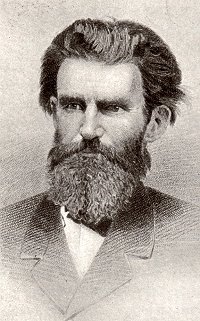
WILLIAM BATCHELDER BRADBURY (1816-1868) HPD Nº 161 E 192 Nasceu: 06 de outubro de 1816 em York, Maine, EEUU Faleceu: 07 de janeiro de 1868 em Montclair, Nova Jersey Sepultado
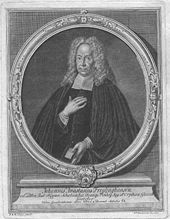
JOHANN ANASTASIUS FREYLINGHAUSEN (1670-1739) – HPD 05 Foi um dos mais destacados teólogos da escola pietista de Halle. Era discípulo, genro e sucessor de August Hermann Francke, sendo o segundo
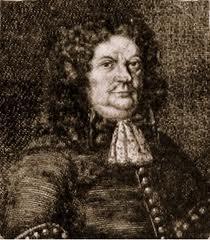
Wolfgang Carl Briegel (1626-1712) HPD nº 134 Nasceu: 21 de maio de 1626 em Königsberg (Baixa Francóvia), Baviera, Alemanha. Faleceu: 19 de novembro de 1712 em Darmstadt, Alemanha Wolfgang Carl

Reynoldo Frenzel (1938-2005) HPD nº 256 e 414 Nasceu: 06 de fevereiro de 1938, em Porto Alegre/RS Faleceu: 04 de setembro de 2005 Reynoldo Frenzel freqüentou o Curso Intensivo para
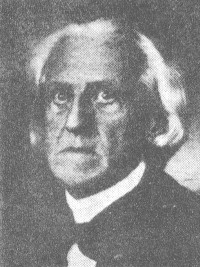
CHARLES CROZAT CONVERSE (1834-1918) HPD Nº 206 Nasceu: 07 de outubro de 1834, em Warren, Massachusetts. Faleceu: 18 de outubro de 1918, em Highwood, New Jersey. Sepultado no Bristol Cemetery,

James Gall (1808 – 1895) melodia de HPD 306 Rev. James Gall nasceu 1808 na Escócia. Faleceu 1894, com 87 anos de idade. James Gall era cartógrafo escocês que se
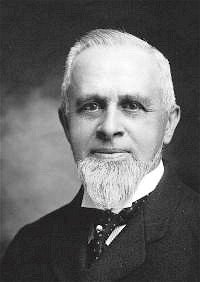
William Howard Doane (1832-1915) HPD nº 85 e 184 Nasceu: 3 de fevereiro de 1832, Preston, Connecticut. Faleceu: 23 de dezembro de 1915, Rhode Island. Sepultado: Cemitério de Arvoredo primaveral

Giovanni Giacomo Gastoldi (1556 -1622) HPD nº 262 Nasceu: Aproximadamente 1556, em Caravaggio, (Lombardia) Itália. Faleceu: 1622 (?), provavelmente em Milão, Itália Giovanni Giacomo Gastoldi nasceu como filho de um

Adam Drese (1620-1701) HPD nº 210 Nasceu: 15 de dezembro de 1620, provavelmente em Weimar, Thuringia (Alemanha). Faleceu: 15 de fevereiro de 1701, Arnstadt, Thuringia. Por iniciativa do Duque Wilhelm

Carl Gotthelf Gläser (1784-1829) HPD 127 Nasceu em 4 de maio de 1784 em Weissenfels, Alemanha Faleceu aos 16 de abril de 1829 em Barmen, Alemanha Gläser é o sobrenome
Todas as notícias
Portal Luterano
We firmly believe that the internet should be available and accessible to anyone, and are committed to providing a website that is accessible to the widest possible audience, regardless of circumstance and ability.
To fulfill this, we aim to adhere as strictly as possible to the World Wide Web Consortium’s (W3C) Web Content Accessibility Guidelines 2.1 (WCAG 2.1) at the AA level. These guidelines explain how to make web content accessible to people with a wide array of disabilities. Complying with those guidelines helps us ensure that the website is accessible to all people: blind people, people with motor impairments, visual impairment, cognitive disabilities, and more.
This website utilizes various technologies that are meant to make it as accessible as possible at all times. We utilize an accessibility interface that allows persons with specific disabilities to adjust the website’s UI (user interface) and design it to their personal needs.
Additionally, the website utilizes an AI-based application that runs in the background and optimizes its accessibility level constantly. This application remediates the website’s HTML, adapts Its functionality and behavior for screen-readers used by the blind users, and for keyboard functions used by individuals with motor impairments.
If you’ve found a malfunction or have ideas for improvement, we’ll be happy to hear from you. You can reach out to the website’s operators by using the following email
Our website implements the ARIA attributes (Accessible Rich Internet Applications) technique, alongside various different behavioral changes, to ensure blind users visiting with screen-readers are able to read, comprehend, and enjoy the website’s functions. As soon as a user with a screen-reader enters your site, they immediately receive a prompt to enter the Screen-Reader Profile so they can browse and operate your site effectively. Here’s how our website covers some of the most important screen-reader requirements, alongside console screenshots of code examples:
Screen-reader optimization: we run a background process that learns the website’s components from top to bottom, to ensure ongoing compliance even when updating the website. In this process, we provide screen-readers with meaningful data using the ARIA set of attributes. For example, we provide accurate form labels; descriptions for actionable icons (social media icons, search icons, cart icons, etc.); validation guidance for form inputs; element roles such as buttons, menus, modal dialogues (popups), and others. Additionally, the background process scans all the website’s images and provides an accurate and meaningful image-object-recognition-based description as an ALT (alternate text) tag for images that are not described. It will also extract texts that are embedded within the image, using an OCR (optical character recognition) technology. To turn on screen-reader adjustments at any time, users need only to press the Alt+1 keyboard combination. Screen-reader users also get automatic announcements to turn the Screen-reader mode on as soon as they enter the website.
These adjustments are compatible with all popular screen readers, including JAWS and NVDA.
Keyboard navigation optimization: The background process also adjusts the website’s HTML, and adds various behaviors using JavaScript code to make the website operable by the keyboard. This includes the ability to navigate the website using the Tab and Shift+Tab keys, operate dropdowns with the arrow keys, close them with Esc, trigger buttons and links using the Enter key, navigate between radio and checkbox elements using the arrow keys, and fill them in with the Spacebar or Enter key.Additionally, keyboard users will find quick-navigation and content-skip menus, available at any time by clicking Alt+1, or as the first elements of the site while navigating with the keyboard. The background process also handles triggered popups by moving the keyboard focus towards them as soon as they appear, and not allow the focus drift outside it.
Users can also use shortcuts such as “M” (menus), “H” (headings), “F” (forms), “B” (buttons), and “G” (graphics) to jump to specific elements.
We aim to support the widest array of browsers and assistive technologies as possible, so our users can choose the best fitting tools for them, with as few limitations as possible. Therefore, we have worked very hard to be able to support all major systems that comprise over 95% of the user market share including Google Chrome, Mozilla Firefox, Apple Safari, Opera and Microsoft Edge, JAWS and NVDA (screen readers).
Despite our very best efforts to allow anybody to adjust the website to their needs. There may still be pages or sections that are not fully accessible, are in the process of becoming accessible, or are lacking an adequate technological solution to make them accessible. Still, we are continually improving our accessibility, adding, updating and improving its options and features, and developing and adopting new technologies. All this is meant to reach the optimal level of accessibility, following technological advancements. For any assistance, please reach out to

